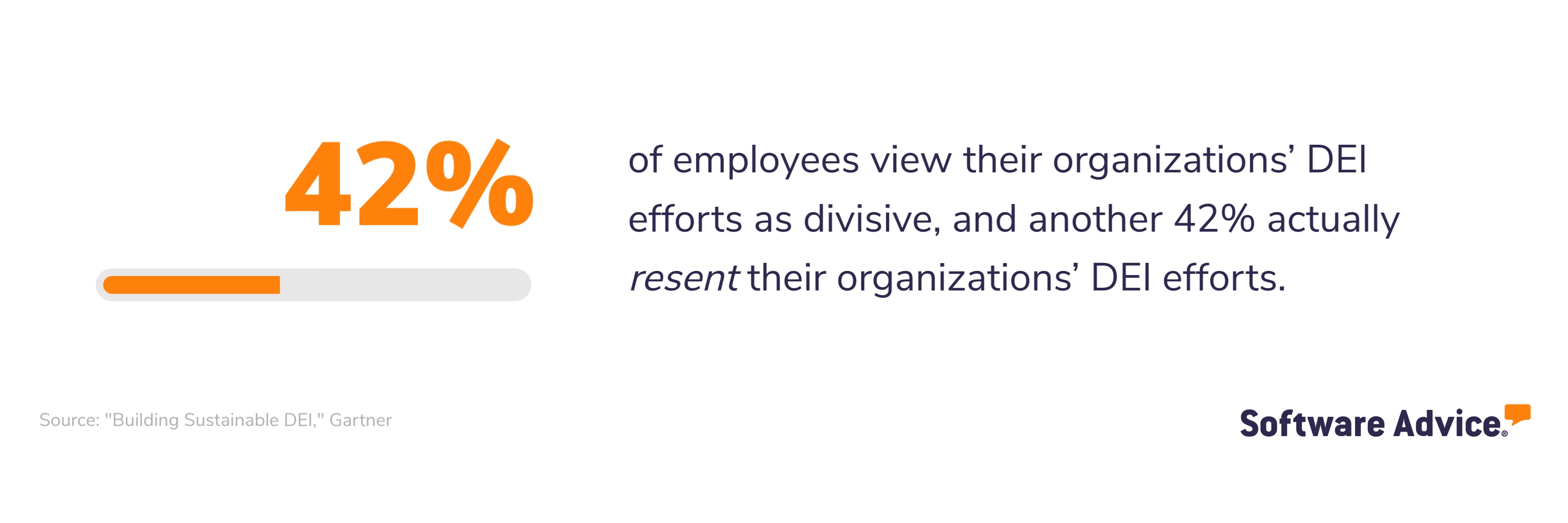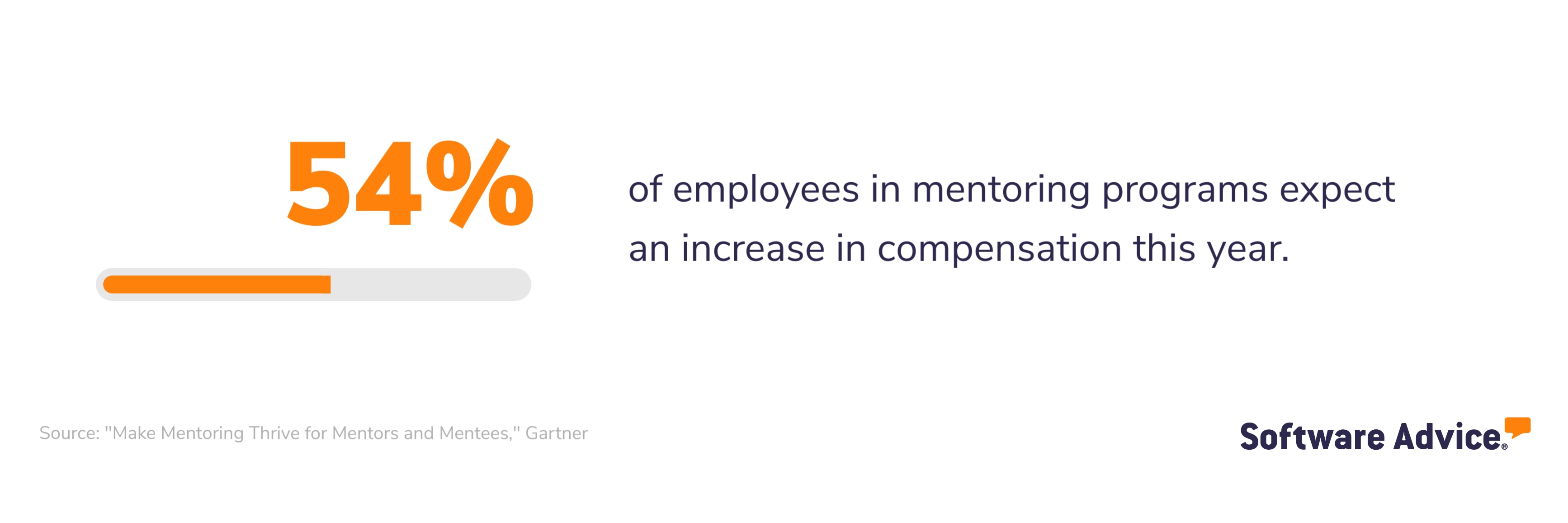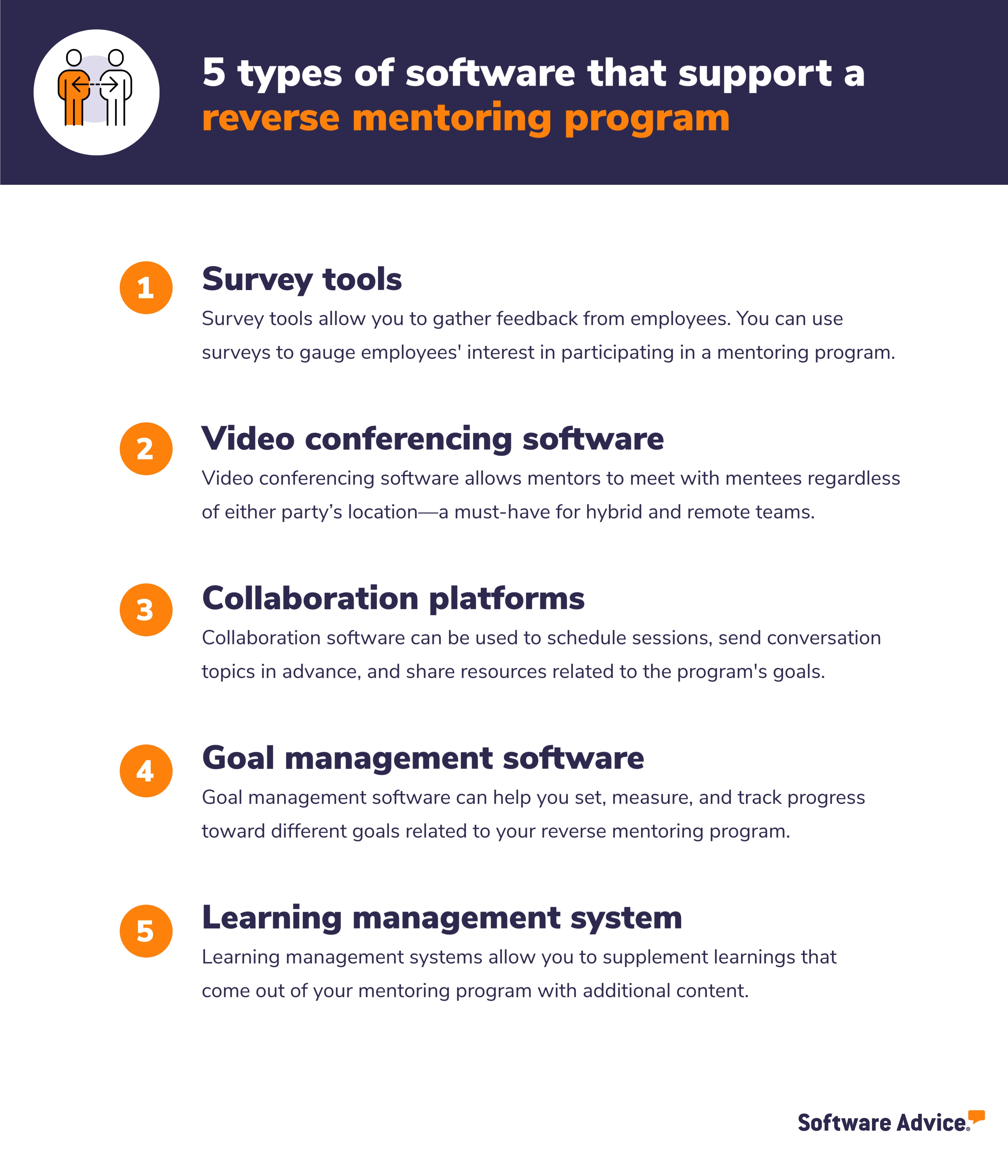What to Know About Reverse Mentoring, an Underused DEI Initiative
Nearly a third (32%) of HR leaders are prioritizing diversity, equity, and inclusion efforts in 2023. [1]
But if you ask employees how DEI efforts are going, just under half would say they’re missing the mark [2]:

If you’re a human resources leader or DEI professional who relates to the challenge of implementing DEI initiatives that are both effective and appreciated by your organization, we’ve got the answer you’ve been looking for: reverse mentoring.
Guided by the perspective of Emily Cosgrove, co-founder of UK-based HR consultancy, The Conversation Space [3], we’ve outlined everything you need to know about reverse mentoring and how it can be a powerful DEI initiative.
Emily Cosgrove
Co-founder of The Conversation Space
What is reverse mentoring?
Reverse mentoring is when a less experienced employee shares their knowledge, skills, or perspective with a more experienced senior employee. As the name suggests, reverse mentoring is the inverse of a traditional mentor-mentee relationship where someone older or more tenured advises or trains a less-tenured employee.
Traditionally, reverse mentoring has been seen as an upskilling strategy. But more recently, organizations are catching on to the fact that reverse mentoring can be used to boost inclusivity and feelings of belonging amongst diverse employees.
Related reading: How Much SMBs Are Spending on Services To Close Skill Gaps
What are some reverse mentoring examples?
The following examples are in line with what you’d see in reverse mentorship pairings focused on upskilling:
A Generation Z marketing specialist mentoring a senior leader on tactics for using Snapchat and TikTok as marketing platforms.
A junior financial analyst educating a VP on the latest fintech trends.
A graphic designer sharing tips and tricks for using a new design tool with an art director.
A millennial people manager communicating to a senior manager strategies they use to develop their team members.
For a program that’s more DEI-driven, Cosgrove shares some examples and tips based on her experience consulting companies on how to set up reverse mentorships:
For a UK-based accounting firm, a group of 11 board members—including C-suite executives—were matched with an individual from the organization in a different region and service line. More than 50 employees applied to become their reverse mentor, showing appreciation for senior leadership’s commitment to the initiative.
Primarily focused on bringing individuals of different races together, members of the strategic leadership team at the British Library were matched with people from across the library with a focus on gaining a better understanding of the experiences Black, Asian, mixed race, and other ethnically diverse colleagues have had in the workplace.
Cosgrove explains that their approach to mentorship pairings is centered around making sure they have scope and real difference between those being matched:
Emily Cosgrove
For a more detailed example of how one financial technology company set up and tracked their reverse mentoring program, check out the case story below [4].
Case study
Broadbridge’s Reverse Mentoring Program Pilot Success
Back in 2020, divisive social issues dominated headlines in the United States. As a result, employers were forced to decide whether they were going to stay silent or support their employees’ through addressing identity-related topics such as race and gender in the workplace.
Broadbridge chose the latter, introducing a reverse mentoring program that facilitated direct, personal conversations between leaders and employees. In its pilot program, 60 volunteer employee mentors and 12 volunteer executive leader mentees met monthly for five 1.5-hour conversations.
Mentees had to apply to participate and were chosen strategically in order to expose leaders to multiple, diverse employee perspectives representative of Broadridge’s workforce. Additionally, monthly conversation topics were selected based on current business and social issues as well as employee survey data.
Upon the pilot program’s completion, Broadbridge ran a participant survey and received positive feedback from employee mentors and leader mentees alike. Executive leaders said the program expanded their perspectives and they would recommend it to their peers. Employees said the program increased their sense of inclusion and they felt safe opening up during the conversations.
What are the benefits of reverse mentoring?
1. Increased inclusivity and exposure to diverse perspectives
When used in the way that Cosgrove suggests, reverse mentoring exposes senior employees—those who make decisions for the organization—to the perspectives of colleagues who differ from them. Cosgrove sums it up like this:
Emily Cosgrove
2. Low-cost upskilling
Eighty-seven percent of organizations are experiencing a skills gap, but less than half are aware of how to address the problem [5]. Reverse mentoring can be an effective and affordable upskilling strategy when the right mentor-mentee matches are made.
The need for digital skills such as UX design, cloud-based computing, social media marketing, and data analytics is constantly rising [6]. However, the pace of innovation in these areas is fast due to AI’s growing presence in tech. This means that skillbuilding in these areas can feel like aiming at a moving target.
Reverse mentoring allows organizations to leverage the know-how of millennials and Generation Z, the first two digitally native generations. But to do this effectively, HR professionals need to start by identifying skill gaps.
Download now: Software Advice's Free Skills Gap Analysis Template
A skills gap analysis can help with this, and the results will determine what kind of employee proficiencies to prioritize for when considering team members for reverse mentoring pairings.
Related reading: Future-Proof Your Workforce With Talent Mapping
3. Improved access to development opportunities
Mentorships have long been acknowledged for their ability to improve access to development opportunities for those who participate. In fact, Gartner reports than the majority of employees actively participating in a mentoring program expect an increase in compensation this year [7]:

By contrast, only 36% of employees who haven’t participated in a mentorship program expect the same. This is because mentoring (whether in the traditional sense or reversed) requires employees to build relationships with those outside of their team, naturally leading to expanded professional networks for those involved.
As a last note on this benefit of reverse mentoring, consider the following: In hybrid work environments, employees who are racially dissimilar from their peers are 20% less likely to receive skills development opportunities [8]. Reverse mentoring can doubly address this unfortunate phenomenon through connecting diverse, younger employees to senior leadership.
How can you prepare your organization for a reverse mentoring program?
If you’re interested in setting up a reverse mentoring program at your organization, you may be wondering what kind of resources you need to get started. The answer is simple at face value: time and tools.
The good news is your organization likely already has some of the tools needed to run a successful reverse mentoring program:

The five tools above typically serve one of the following purposes for reverse mentoring programs:
Conversation/relationship facilitation: Video conferencing software and collaboration platforms fall into this category. Both types of tools can be used by program participants to meet, communicate, and plan sessions. To quote Cosgrove:
Emily Cosgrove
Data collection/analysis: During our interview, Cosgrove mentioned using surveys at several different points—for example, she suggests running the same survey at the beginning, middle, and end of a program in order to track changes in employee responses over time.
Goal setting software also falls into this category as it can be used to measure the impact your program has on employee engagement, job satisfaction, and other metrics.
Supplemental development content: Whether your reverse mentoring program is focused on DEI or development, a learning management system (LMS) can provide content for continuous learning.
Related reading: Corporate E-Learning: 3 Options for SMBs
Before you go: There’s more you can do to improve your DEI efforts
In this guide, we’ve covered everything you need to know about reverse mentoring, from the benefits it can bring to your business to the tools you need to support your own reverse mentoring program.
We asked Cosgrove if she had any parting words of advice for our readers, and here’s what she had to say:
Emily Cosgrove
If reverse mentoring doesn’t seem like a fit for your business, don’t fret—there are other strategies you can use to improve your organization’s DEI and upskilling efforts. In fact, we’ve covered some of them before on our blog and you can start learning about them right now:
Sources
Building Sustainable DEI, Gartner
Emily Cosgrove, LinkedIn
Case Study: Reverse Mentor Program to Expand Leader Mindsets, Gartner
Leveraging Skills Adjacencies to Address Strategy’s Technical Skills Gaps, Gartner
Diversity, Equity and Inclusion Resources for HR Professionals Primer for 2023, Gartner
Note: Questions and responses have been edited for brevity and clarity.